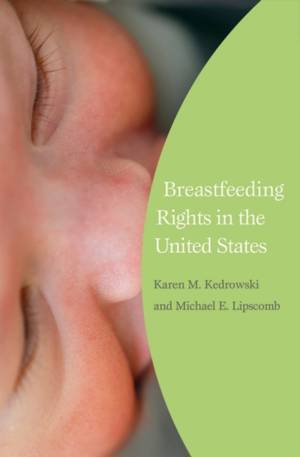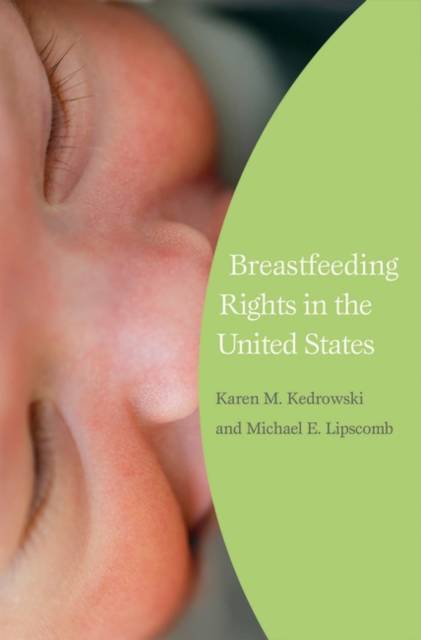
- Retrait gratuit dans votre magasin Club
- 7.000.000 titres dans notre catalogue
- Payer en toute sécurité
- Toujours un magasin près de chez vous
- Retrait gratuit dans votre magasin Club
- 7.000.0000 titres dans notre catalogue
- Payer en toute sécurité
- Toujours un magasin près de chez vous
Description
Breastfeeding Rights in the United States shows that the right to breastfeed in this country exists only in a negative sense: you can do it unless someone takes you to court. Kedrowski and Lipscomb catalog and analyze all the laws, policies, judicial opinions, cultural mores, and public attitudes that bear on breastfeeding in America. They then explore the classic double bind: social norms promulgated by the medical and public health establishment say breast is best; but social practices in the workplace and in public spaces make breastfeeding difficult. Aggravating the double bind is the prominence of the breast in American culture as a sexual object. The double bind creates coercively structured choices that are incompatible with the meaningful exercise of rights.
The authors conclude that the solution to this problem requires new theory and new strategy. They posit a new democratic, feminist theory of the breastfeeding right that is predicated on the following distinctions: DT It is not a right to breastfeed, but a right to choose to breastfeed. DT It is a woman's right to choose, not a baby's right to be breastfeed. DT It is a right, not a duty. The authors predict that framing the breastfeeding right in this way provides the basis for a new strategic coalition between breastfeeding advocates and liberal feminists, who have historically been wary of one another's rhetoric. Breastfeeding Rights in the United States represents an important advance toward policy change.Spécifications
Parties prenantes
- Auteur(s) :
- Editeur:
Contenu
- Nombre de pages :
- 192
- Langue:
- Anglais
- Collection :
Caractéristiques
- EAN:
- 9780275991364
- Date de parution :
- 30-12-07
- Format:
- Livre relié
- Format numérique:
- Ongenaaid / garenloos gebonden
- Dimensions :
- 164 mm x 243 mm
- Poids :
- 439 g

Les avis
Nous publions uniquement les avis qui respectent les conditions requises. Consultez nos conditions pour les avis.






